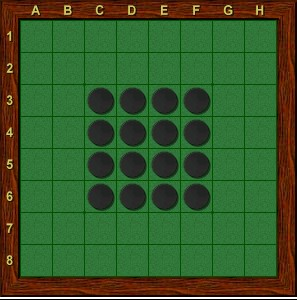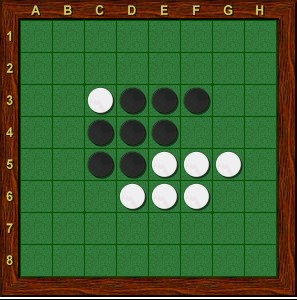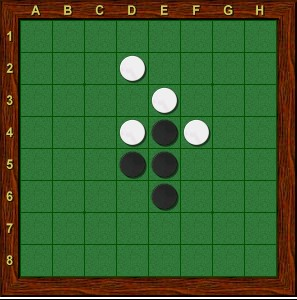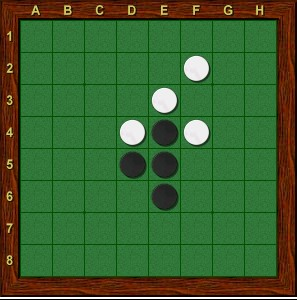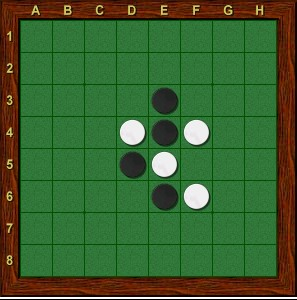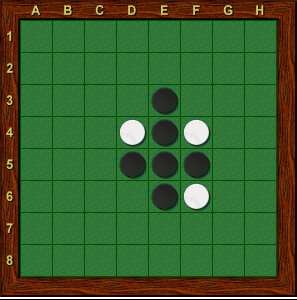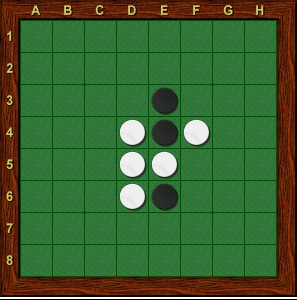Fang: Simple Opening Advice
| Klicke hier für die deutsche Version | |
|
Navigation: Main Page > Learn Othello > Book Fang |
<< previous chapter << - >> next chapter >> |
- Understanding is the key
- More of the same
- A few new ideas
- Pay attention!
In chess, one of the biggest mistakes that I feel that beginning players make is to assign too much importance to the openings. They feel that better players are “tricking them” by being better prepared in the openings. So, they rush out and buy a book of openings and start memorizing them. While I feel that having an opening repertoire is useful for a more seasoned player, it is much more important for a beginner to understand the WHY of an opening. When you memorize openings without understanding why you are making the moves, the instant you venture into unfamiliar territory, you are likely to blunder. What I do recommend is to keep your eyes open and trying to learn from your mistakes.
Do you keep making the same kinds of moves and keep getting into bad positions because of them? I know it sounds obvious, but figure out what it is that you’re doing wrong and try not to do it anymore. Thinking about what concepts and ideas do work and what ones don’t work will help you all the way from beginner through master.
Now that I’ve encouraged you to experiment and discover openings on your own, I’ll try to give some general advice about what you should be trying to accomplish during an opening. Much of what I have to say is similar to the advice that I’ve given in the previous sections but it doesn’t hurt to reiterate it here.
- Try not to take too many disks.
- Try to head for the edges.
- Try to limit your frontier.
- Don’t play into X-squares or C-squares where you’re putting yourself in a dangerous position.
In addition to these basic concepts, there are a few new concepts I’d like to introduce here as well.
The first concept I’d like to introduce is the Sweet 16 – this term refer to the central 16 squares of the board:
Another good idea is to stay compact. Being compact means that you don’t want your disks spread out all over the place. You definitely don’t want spaces in between your disks because those squares are very likely places for your opponent to play to stay central to your disks. Notice how in the previous example all of white’s disks are in one big clump while black’s disks are almost cut in two by white’s disks. In the example, white is compact and black isn’t. Staying compact also tends to lead to fewer frontier disks.
Before I close out this chapter let’s take a look at a common mistake that I see beginners make very often that emphasizes the necessity of staying central and compact.
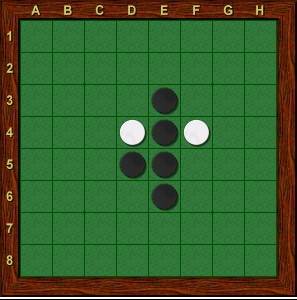
|
The diagram can be reached by playing E6, F4, E3 – we are 3 moves into the game. White has 4 options here, however, only one of them is any good. |
| WHITE TO PLAY |
|
Navigation: Main Page > Learn Othello > Book Fang |
<< previous chapter << - >> next chapter >> |
